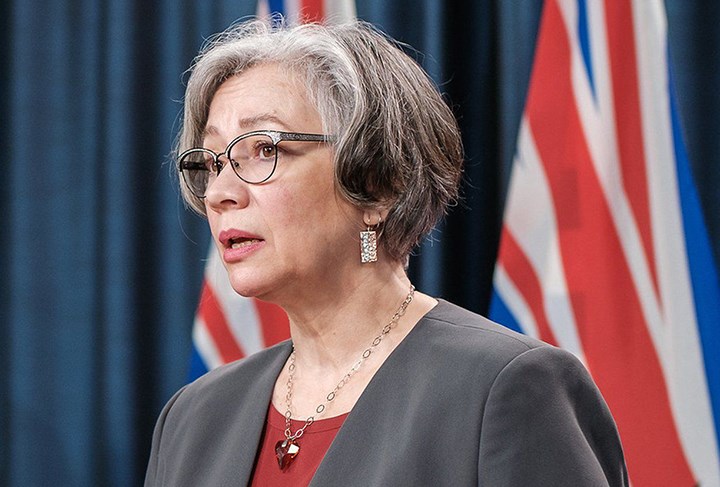After months of lobbying by teachers unions for increased public health measures in schools, B.C.’s education minister made masks mandatory for middle and high school students, and kindergarten-to-grade 12 teachers.
“We want students, their families, and staff to feel confident with the safety measures in place – that’s why we’re making these updates,” announced Minister of Education Jennifer Whiteside this afternoon.
Instead of removing masks upon entering their classroom, middle and high school students will now have to stay masked until seated at their desks.
“It isn't going to be a huge shift,” said Prince George District Acting Superintendent Cindy Heitman. “The only difference, really, for our students and staff is that they have to wear their masks within their learning groups.”
Students will not need to wear a mask when at a workstation, if separated by a barrier, or while eating.
“If they have to get up and move to sharpen a pencil or get something, they'll have to put their masks on,” said Heitman. “So, we'll have to do some more education around reminding students to wear their masks when they leave their workspace.”
Whiteside, joined by Provincial Health Officer Dr. Bonnie Henry, also released more detailed guidelines around activities in schools, including instructing masks be worn during singing, that strenuous physical activities be done outdoors, and musical equipment be sterilized between players.
Previously, middle and high school students had to wear a mask in all high traffic areas, such as hallways, outside classrooms, on buses, and in situations where physical distancing wasn’t possible, but were allowed to remove their masks within their learning groups.
For elementary school students, wearing masks indoors remains a personal choice, Whiteside said.
To date, school districts have been funded to purchase 3.9 million in masks for students and staff. As well, the federal government provided B.C. a $242.4 million one-time payment for schools during the 2020/21 school year, with an additional $112 million from the provincial government to school districts and independent schools to cover COVID-19-related costs. Rapid response teams allocated a total of $900,000, will work in each health authority to improve the speed of school exposure investigations.
After months of lobbying the Ministry of Education for increased safety measures in schools for teachers, B.C. Teachers Federation President Teri Mooring welcomed today’s changes but said they didn’t go far enough, and continued asking for reduced class sizes, improved ventilation in schools, and prioritized vaccinations for teachers, among other things.
Locally, the Prince George District Teachers Association (PGDTA) did not respond to requests for a comment by press time, but a representative previously stated that public health measures “were not sufficient to feel safe in schools,” according to a public letter to Henry from the association tweeted on Dec. 16.
“It was a bit shocking when I read what (PGDTA) put out,” said Tabitha Krauskopf, a Prince George district elementary school teacher. “The schools are safe. People are respectful. Families are really supportive. They keep their kids home; they follow Northern Health guidelines.”
Both the BC Teachers Federation and the PGDTA have petitioned for mandatory masks in all areas of school.
“I have kids in my class who wear them. I have kids who don't,” said Krauskopf. “That's up to their parents to make that call.”
Krausknopf worries about the impact on students who see their teachers masked all the time.
“Any teacher is going to tell you that you have to build relationships with kids to help them learn,” she said. “I do think having adults wear a mask does impede that.”
Both teachers unions have also called for a 50 per cent reduction of class density to increase physical distancing.
Every teacher would welcome reduced class sizes, says Krauskopf, citing improved academic performance with smaller student-to-teacher ratios, but her split class of 21 grade 1 and 2 students is manageable.
“I have my students in rows; we have space,” she said. “Even if you limit class sizes, if you're looking at an elementary school, they're never going to be exposure free.”
Schools have had some exposures because they are a reflection of what is happening in the communities, said Henry. “We’ve had very little spread within the school setting, particularly within the classrooms.”
In the PG school district, since early October, a total of 34 staff, visitors, or students in a school building have tested positive for COVID-19, said Heitman.
“We have 15,000 staff and students and have only had 34 exposure notifications,” Heitman said. “Something's working in our plans.”
For Krauskopf, her workplace feels safe.
“The role of the union is to protect their members, but I really feel that my role as a teacher is to look after my students,” she said. “I don't feel that I am in harm's way, and my students, we need to look after their mental health.”

.png;w=120;h=80;mode=crop)

